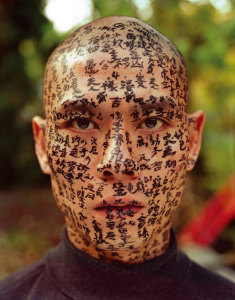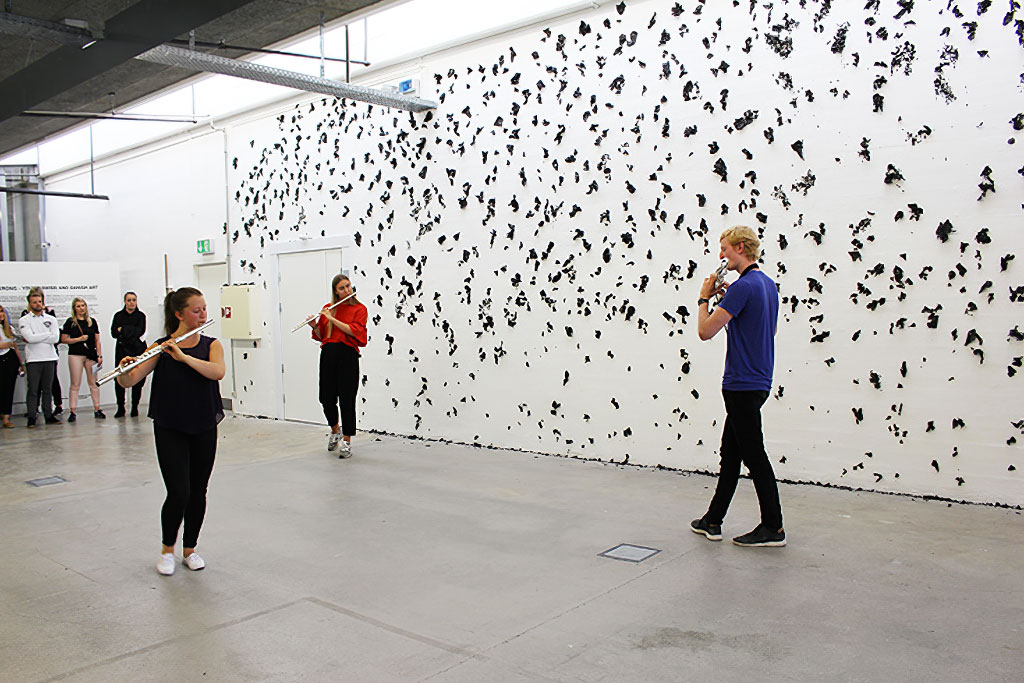ART-PRESENTATION: Bodies of Knowledge
 The exhibition “Bodies of Knowledge” brings together ten international contemporary artists to reflect on the role that language plays in archiving and asserting our cultural identities. Working with materials that range from books and silent film to ink, ashes and musical scores, the artists propose language as a living and ever-evolving document that can counter more staid and static ways of representing our collective pasts.
The exhibition “Bodies of Knowledge” brings together ten international contemporary artists to reflect on the role that language plays in archiving and asserting our cultural identities. Working with materials that range from books and silent film to ink, ashes and musical scores, the artists propose language as a living and ever-evolving document that can counter more staid and static ways of representing our collective pasts.
By Efi Michalarou
Photo NOMA Archive

Organized around a series of immersive installation and film projects, the exhibition “Bodies of Knowledge” at New Orleans Museum of Art (NOMA) asks us to consider how we might write more inclusive narratives, reshape public space, and account for bodies and histories that have, in large measure, been written out of them. Bringing a new global perspective to current conversations in New Orleans surrounding cultural preservation and historical memory, Bodies of Knowledge draws together artists working with many different systems of knowledge to illustrate how history can be erased, rewritten and asserted anew. In “Brèves Braises” Manon Bellet invites musicians to perform in front of an installation composed of the charred remains of burned paper, letting the paper (a material that typically carries written histories) slowly crumble to dust through the improvisational energy of musicians as they play in front of the piece. Wafaa Bilal’s interactive installation “168:01” commemorates the burning of Baghdad’s libraries during the 2003 American invasion of Iraq, inviting museum visitors to fill the shelves of an austere white library with donated books that will be shipped to the College of Fine Arts at the University of Baghdad at the closing of the exhibition. Garrett Bradley’s immersive, multi-channel film “America” proposes that there was an entire body of silent films made by and for African American artists, audiences and filmmakers that has since been lost, and reimagines this lost archive through a corpus of new films. Mahmoud Chouki will create a new musical composition and series of site-specific performances for the exhibition titled “Safar” (Arabic for “to travel”), that will explore how music can speak across cultural divides to create new forms of dialogue between East and West. Adriana Corral’s “Memento” draws attention to the widespread disappearances of women and girls in Juarez, Chihuahua, Mexico, through a site-specific installation in which the artist writes these women’s names on the museum’s walls with ashes obtained from burned legal documents. William Kentridge’s animated film “Zero Writing” created in the artist’s signature, stop-motion animation style, layers drawings and texts from Kentridge’s personal journal to reflect on the ongoing transformation of history, politics, and memory in the contemporary world. Zhang Huan’s seminal “Family Tree” documents a daylong performance wherein he covered his face with words, names, and stories drawn from his family history and Chinese folktales, resulting in the artist’s likeness becoming completely obscured across a series of nine large-scale photographic portraits. Shirin Neshat’s practice, represented here by a photograph from the artist’s “Rapture” series and a related film program in the museum’s auditorium—probes stereotypes of Islamic militancy and femininity through a series of works in which Farsi text is superimposed over the body. Edward Spots and Donna Crump choreographed and performed “Black magic” an original dance piece that features twelve young dancers from “Dancing Grounds” on the exhibiton’s opening day. The performance begun on the front steps of the museum and proceeded into the Great Hall after the first of five acts. Wilmer Wilson IV’s installation features his 2012 video “Black Mask” in which the artist slowly obscures his face with black Post-it notes, alongside a new series of artist books in which the artist documents a series of recent performances in cities around the world, including Rome, Philadelphia, London, Brussels, Barcelona, and now, for this exhibition, New Orleans.
Participating artists: Manon Bellet, Wafaa Bilal, Garrett Bradley, Adriana Corral, Mahmoud Chouki, Zhang Huan, William Kentridge, Shirin Neshat, Edward Spots and Wilmer Wilson IV.
Info: New Orleans Museum of Art (NOMA), One Collins Diboll Circle, City Park, New Orleans, Duration: 28/6-13/10/19, Days & Hours: Tue-Fri 10:00-18:00, Sat 10:00-17:00, Sun 11:00-17:00, https://noma.org






